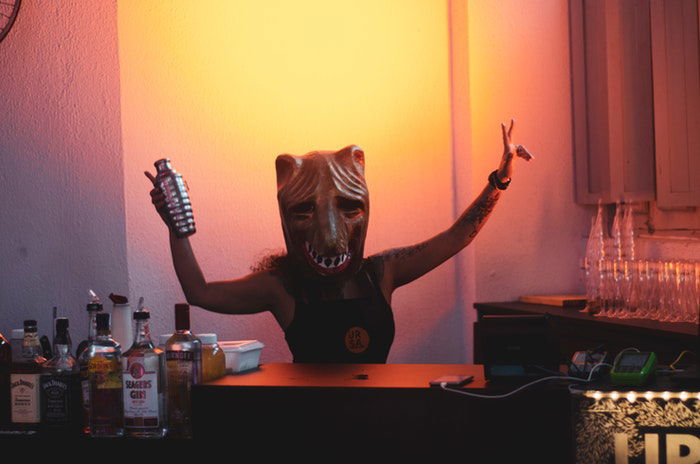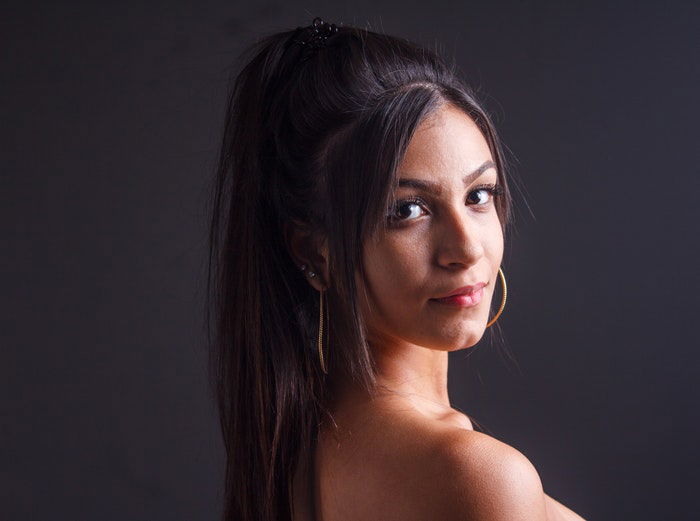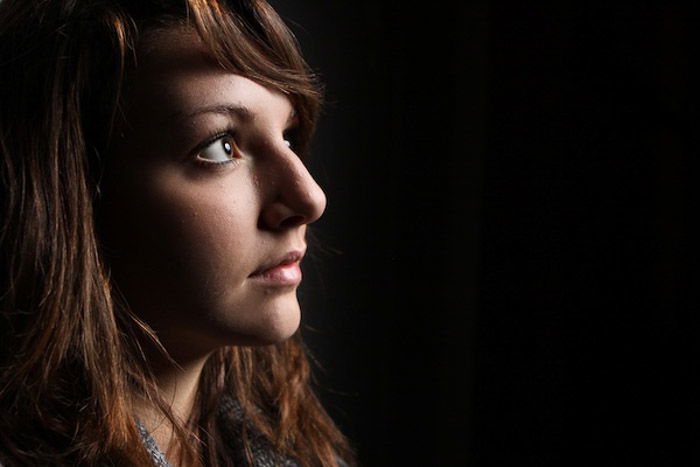How to Shoot Moody Dark Portrait Photography
Moody dark portrait photography is all about intense emotions. You can use this genre to take thought-provoking and touching photos of people.
Dark portraits aren’t always melancholic and are very easy to make.
What Defines Moody and Dark Portraits?
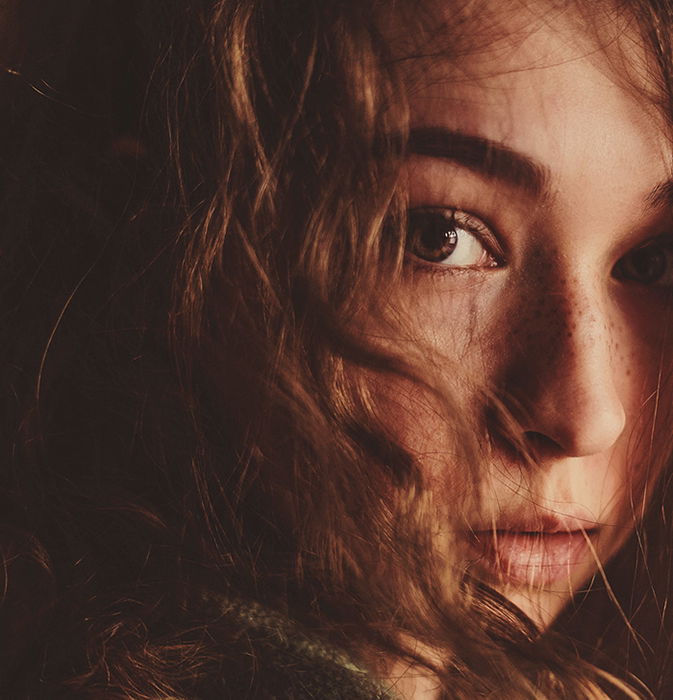
This is one of many examples of dark portraits. The model’s expression, the cropped composition, and the limited light give a variety of emotions to this image.
Moody portrait photography doesn’t have to be gloomy or upsetting in any way. You can photograph a smiling person and end up with a moody photo.
Lighting, concepts, and angles all play a significant role in moody photography. Simply altering one part of your image can turn it into something with depth and meaning.
This is why color correction is so important in this photography genre.
As you can see, dark portraits are defined by the way they’re made. Not by the subjects they feature.
Treat this style as a canvas. And then you’ll be able to take incredible, moody photos of all your models.
Come Up With an Interesting Concept to Inspire Yourself
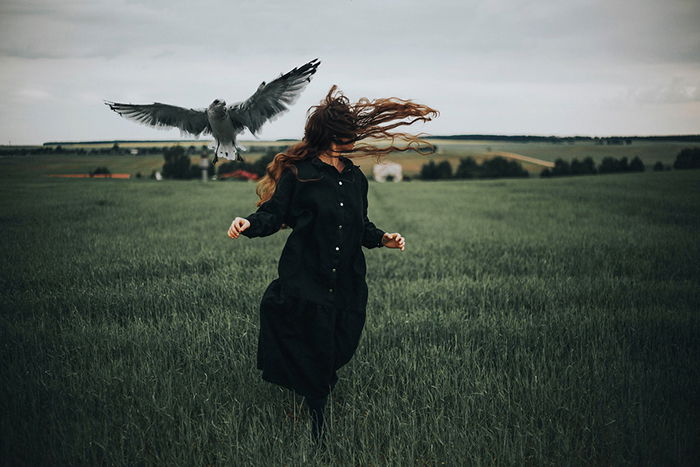
Don’t be afraid of experimenting with editing tricks to enhance your dark portraits. To make this photo more surreal, I added a bird in Photoshop. This helped me tell a more interesting story about the model and her pose.
Most moody photos come with a story. This can be a simple theme or a complicated prose piece.
If you enjoy writing, you might find inspiration in quotes or your own stories. You can write short stories and see if they help you visualize your photoshoots.
You can also come up with themes related to moodiness. Unrequited love, yearning, and curiosity are often expressed in dark portrait photography.
Once you have a concept in mind, you’ll find it easier to take meaningful photos of yourself or your models.
Use a Limited Amount of Light to Put the Spotlight on Your Model
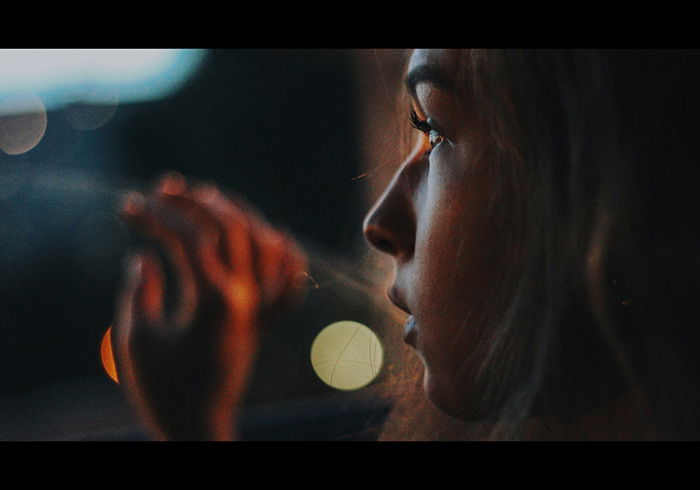
Grain can make or break an image. It’s often a great tool to make dark portraits look raw and untouched.
Moody photos stand out because of the way they’re lit. Many of them resemble Rembrandt paintings thanks to their mysterious and limited natural light.
The limited highlights and abundant shadows create an intimate feeling that’s perfect for this style.
You can create limited light in a variety of places. You can shoot indoors when it’s sunny and outdoors when it’s gloomy.
Times of the day are also very important. Evening and afternoon light are perfect for cinematic and grainy photos like the one above.
Use Direct Light and Shadows to Emphasise Certain Parts of Your Model’s Face
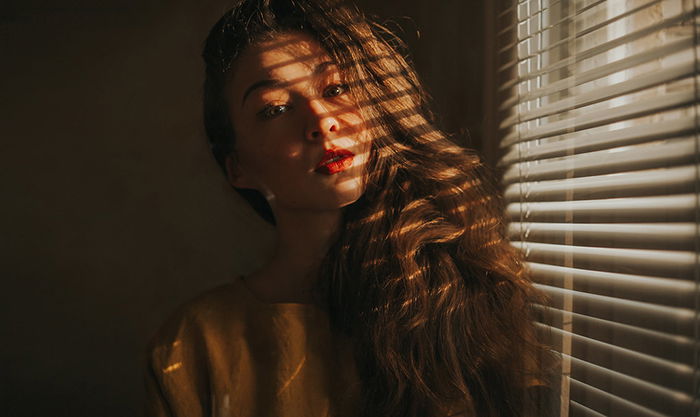
Window blinds are ideal for creating beautiful dark portraits of people’s faces and hair.
Direct light is often harsh. This can make it a nuisance in other photography genres. In moody photography, it’s an invaluable tool.
Combine direct light with shadows to add a sense of mystery. Create a pattern of shadows by using curtains or other kinds of fabric. You’ll be able to focus only on your model’s eyes or lips.
Use branches, hair, hands, and window blinds to create unique shadows on your subject’s face.
Switch to a Large Aperture to Create Softness
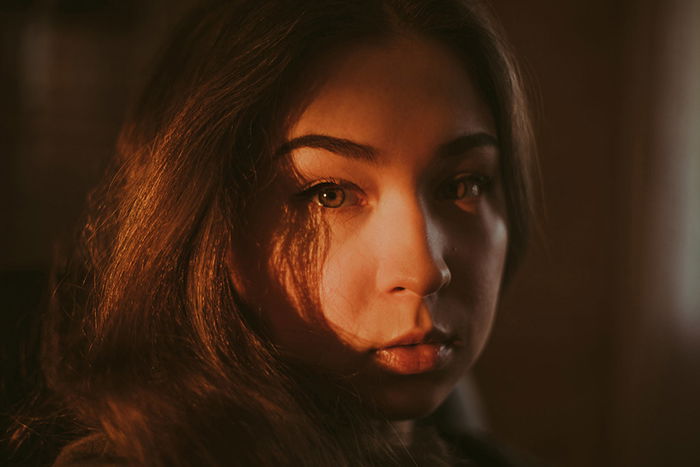
The background in this photo was filled with small distractions. Instead of getting rid of them, I blurred them out to create a textured background that didn’t take the spotlight away from the main subject of this dark portrait.
If you want your dark portrait to really stand out, you need to use a large aperture. Adding softness to your photos will make them dreamier and moodier.
A large aperture, also known as a small f-number, ranges from around f/1.2 to f/4. The smaller the number, the softer your backgrounds will be.
Use Textures to Make Your Photos Look “Well Worn”
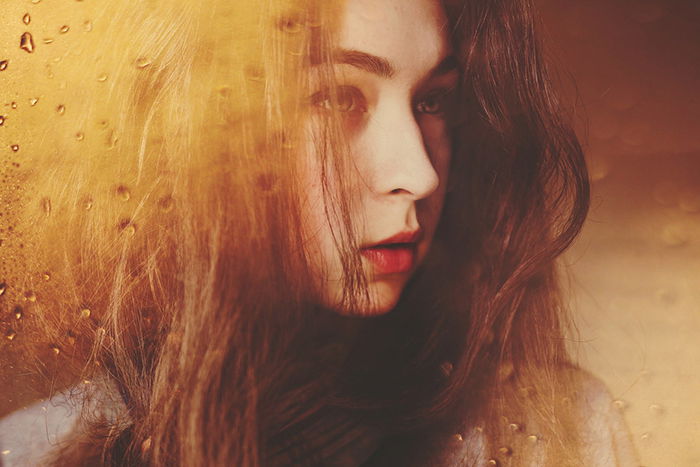
I enhanced this dark portrait using a photo of a window on a rainy day. The golden light created a light leak effect and enhanced the simple white background.
Developed photos and prints become well worn with time. The faded look and torn edges give them an ethereal feel. This is difficult to re-create in digital photography.
Fortunately, they can be re-created in an editing program.
You can use stock photos of grain, scratches, and other textures to make your photos look like they’ve been around for a long time.
This will enhance the moody atmosphere. And it’ll give you a chance to get creative with stock photos.
Convert Your Photos to B&W to Make Them More Emotional
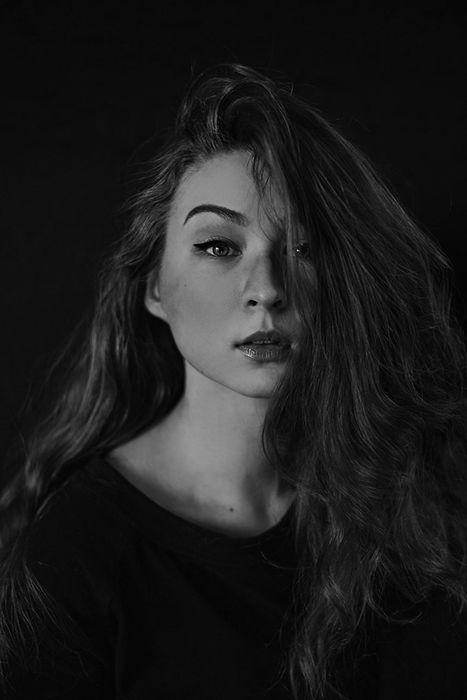
The colored version of this dark portrait is very warm and bright. The b&w version is warm, meaningful, and stands out more thanks to the lack of color.
A simple black & white conversion can add depth to a photo. A lack of colorful distractions makes it easy to focus on a model’s expression and understand what a photo is trying to say.
You can shoot in black and white or convert your photos once you’re done. Both methods will challenge you in different ways.
Shooting in b&w will help you see the world from a new perspective. This might influence the way you photograph your model and their surroundings.
Converting to b&w will give you more control over every part of your photo. For example, you can your model’s lips with the help of a slider in Lightroom.
These editing tools will teach you how to be a more efficient and creative editor.
Use a Simple Black Background to Make Your Model Stand Out
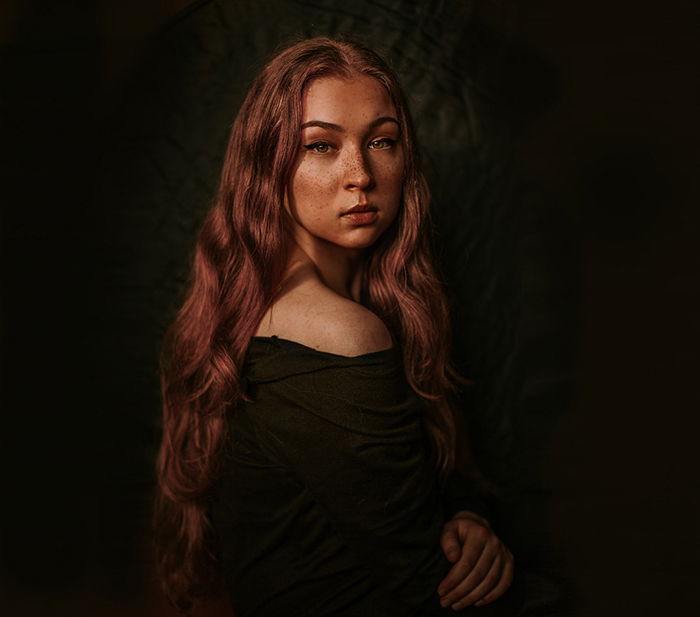
To enhance the model’s face, even more, I sharpened her eyes, freckles, and hair. This is a better alternative to sharpening your entire image. Specific sharpening will carefully focus on, and enhance, details of your dark portrait that you care about.
Studio photos tend to be moody thanks to their controlled light. You can re-create this by using a simple black background and limited natural light.
The photo above was taken in front of a window on a cloudy day. The soft window light fell on the model’s face and faded away in other areas of her body.
The black background eliminated distractions and created an intimate studio feel.
With the right editing and lighting tools, you can take studio-like photos at home.
Experiment With Funny and Serious Expressions to Find the Perfect One
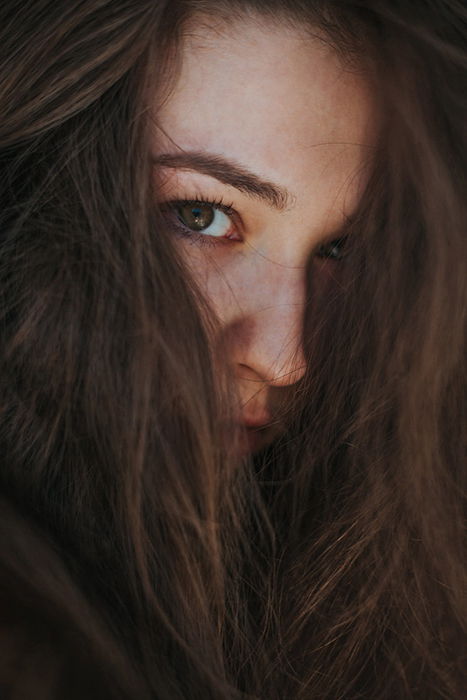
I’ve found that serious expressions work better with close-ups. Happier ones look more appealing when I zoom out. How you work with your dark portraits is up to you. Feel free to play around as much as possible!
As I mentioned earlier, moody photography isn’t limited to specific expressions. The more you experiment with different ones, the easier it will be to find ones that work for you and your style.
Some photographers find inspiration in moody photos that feature smiling people. Others prefer somber expressions. What you choose depends on you and your model.
If you want to get better at giving posing instructions to your model, take self-portraits. Self-portraiture will teach you how to feel confident in your own skin and how to empathize with the people you photograph.
Create Abstract Silhouettes Using Semi-Transparent Material
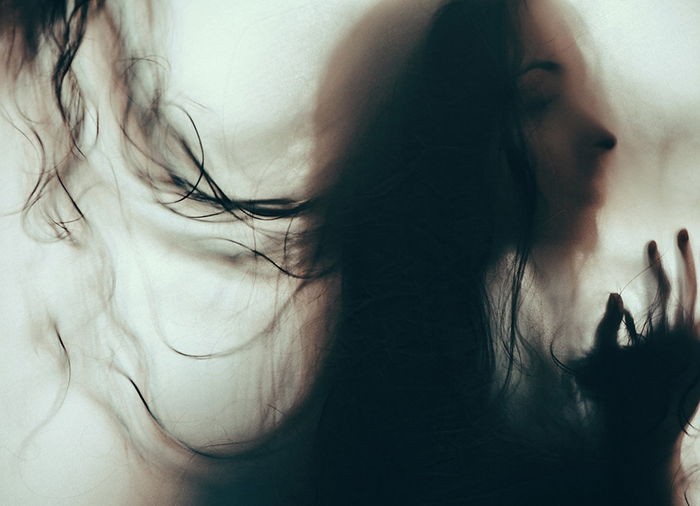
You can include hair and other accessories to make your dark portraits more interesting or meaningful.
Some moody portraits are as haunting as they are dreamy. To re-create an effect like the one above, take photos of your model through a semi-transparent material.
I used a simple white diffuser, but you can use tracing paper or a piece of painted glass.
For this effect to work, shoot against a source of light, such as a window or a torch. This will enhance your model’s silhouette.
Keep in mind that your results will be blurry because of the extra layer of fabric. Make sure your model is as close to the fabric as possible to ensure that some parts of your image are sharp.
Color Correct Your Results to Ensure They Look as Moody as Possible
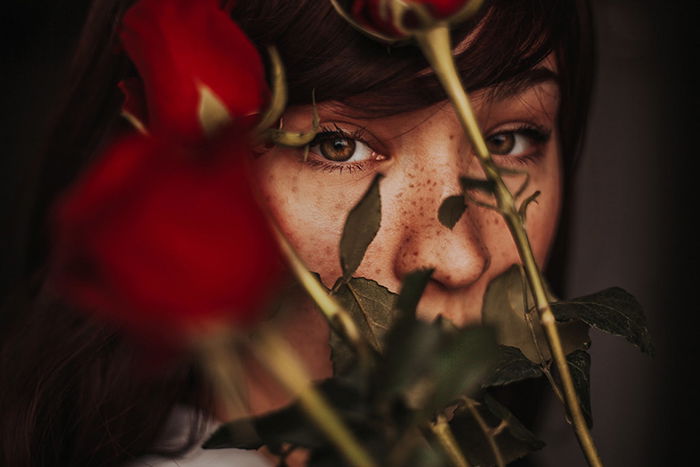
I changed the hue and saturation of the roses’ stems and enhanced the color of the roses. This allowed me to focus more on the roses and the model’s eyes. The desaturated green tones also add to the moodiness of this dark portrait.
Color correction is important in moody portrait photography. Without it, your photos might look duller than they should.
You don’t need to be an editing pro to successfully enhance your portraits. A simple contrast, sharpness, and saturation boost can make all the difference.
If you want to have full control over your images’ colors, use a professional program like Lightroom.
Lightroom will give you easy access to different features, such as a color’s hue, saturation, and lightness. You can remove or alter certain colors using these tools.
I often desaturate greens and yellows in my moody portraits. This gives my photos an otherworldly feel and draws attention to the color of my model’s eyes or hair.
If you don’t have a lot of time, you can still edit your photos within seconds. All you need are pre-made Lightroom presets for moody photography.
Conclusion
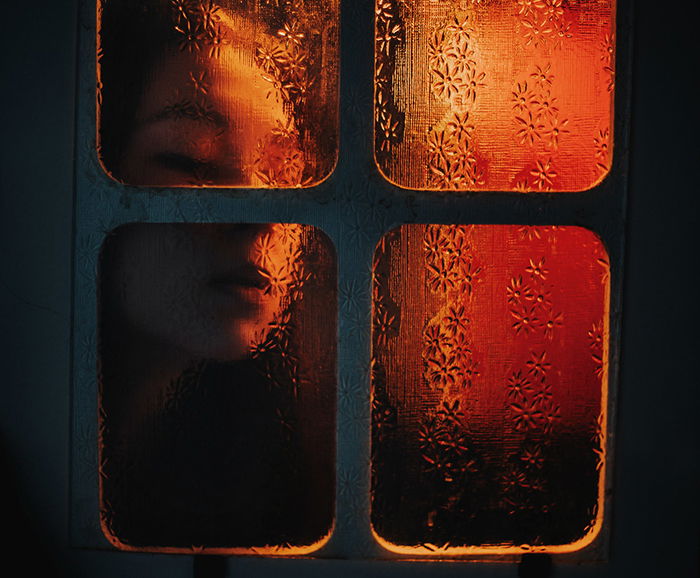
Dark portraits can help you express yourself in ways other genres won’t let you. You can use simple themes, such as friendship, to create thought-provoking works of art.
To achieve this, all you need are simple editing skills, knowledge of light, and an appreciation for emotions of all kinds.

